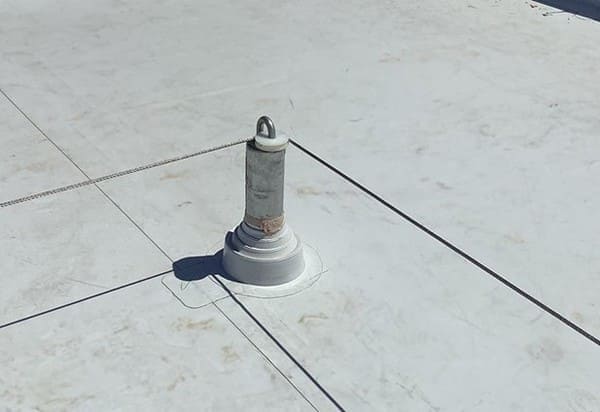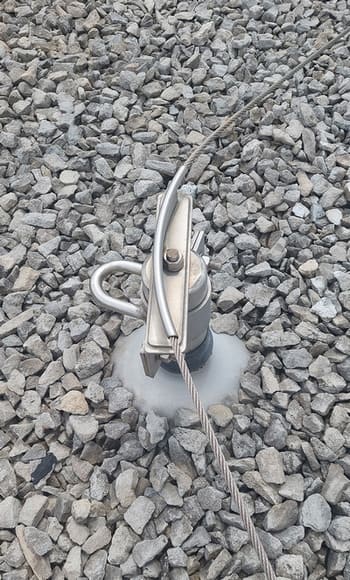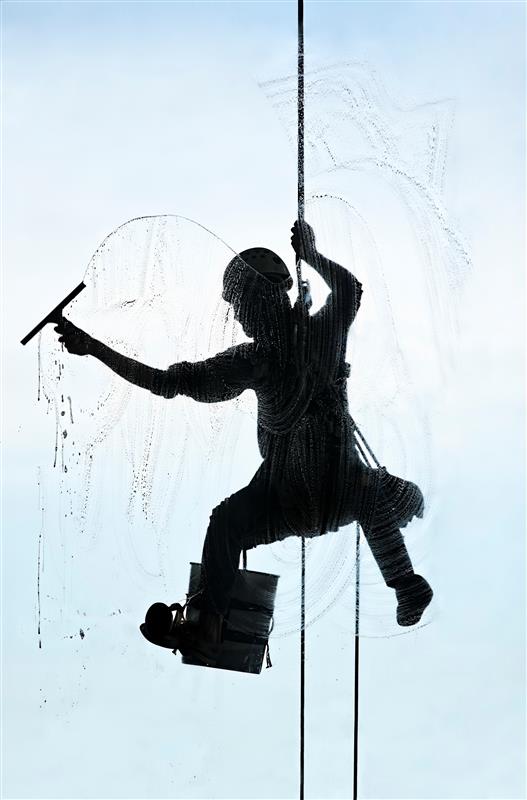Why Fall Protection Lifeline is Essential
Fall protection lifelines are one of the most vital parts of job site and building safety, essential for not only construction sites when first developing but also any buildings where employees work at elevated heights with significant fall hazards, whether it be window washing rooftop/façade maintenance, or other similar cases.

There are multiple types of lifelines in the fall protection industry, but the three key types are Horizontal Lifelines, Vertical Lifelines, and Self-Retracting Lifelines. Regardless of whether they’re used for construction, utility maintenance, or other roles, lifelines play a critical role in safeguarding lives and ensuring compliance with OSHA safety standards. In other words? Having a proper fall protection lifeline and safety system isn’t just a good idea for you and your workers – it’s the law.
Even though the type of fall protection lifeline will differ, they’ll all have some things in common – the anchor points, a lifeline cable, and the worker’s harness and lanyard attached to the cable.
Horizontal Lifelines

A Horizontal Lifeline System (HLL) is a safety system installed on rooftops as part of an anchorage network, designed to protect workers operating near fall hazards such as roof edges, skylights, or elevated walkways. These systems are used as fall restraints for workers who must approach within 6 feet of a roof edge. The cable is connected to secure anchor points, allowing workers to traverse the area the system covers freely as they maneuver along the line. The two main types of horizontal lifeline systems are Double lanyard and Hands-Free. The system consists of a stainless-steel cable connected between two or more secure anchor points, allowing workers to attach their harness and lanyard to the line.
The stainless-steel cable is strung through multiple sets of rooftop anchorage points, spaced at specific intervals, that will allow the workers attached to the horizontal lifeline to traverse to all equipment within the roof’s hazard zone without approaching the edge. After all, the safest form of fall protection is to prevent the risk of a fall from ever occurring in the first place.
Download our brochure for the horizontal lifeline for more details
As mentioned above, the horizontal lifeline system can also be used as a fall arrest system if your building’s anchor points need to be installed within the hazard zone, provided there is enough distance to the lower level to adequately arrest the fall without bottoming out or hitting the building’s lower levels or obstructions.
Vertical Lifelines
A Vertical Lifeline (VLL) is a fall protection safety system designed for vertical movement, most commonly used during facade maintenance or window washing when workers need to ascend or descend a building. They’re implemented as safety lines when window washers or other facade maintenance personnel descend or ascend a building. The lines are attached to tieback anchors installed behind the window washing equipment at a specific offset angle to minimize and stay within the allowable swing fall hazard, commonly known as the “pendulum effect”.
If the primary safety line snaps or fails, the vertical lines act as a fall arrest system, suspending the fall until help arrives. This type of fall protection system is vital for protecting workers in the unlikely event of primary system failure. Still, care must be taken not to leave the worker suspended for too long, as the dangling worker can risk serious injury or even death. VLLs are available in both temporary and permanent configurations. Temporary systems are often lightweight and easy to install, while permanent systems are designed for durability and repeated use.
Are you unsure which lifeline is right for your site? See our guide to Horizontal vs Vertical Lifelines
Self-Retracting Lifelines
Self-retracting lifelines (SRLs) are a subtype of fall protection cable that allows users to move freely within a specified area. They function similarly to a car’s seatbelt, featuring a retractable line or cable that extends and retracts as the user moves, but locks in place if sudden jerking movement is detected, such as when a fall occurs.
Which fall protection lifeline to use
Understanding the different types of lifelines and applications is crucial for selecting the right system – or a combination of them – for your project. Each type offers unique features and benefits tailored to meet your demands.
At Pro-Bel, we understand that thousands of companies and their employees who work at heights trust us for safe and reliable fall protection systems and lifelines. Our commitment is to maintain and enhance safe work environments, ensuring everyone goes home safe and healthy.
Share this Post

